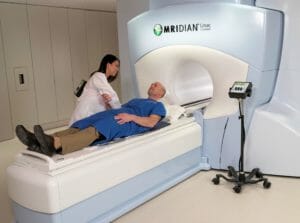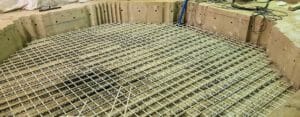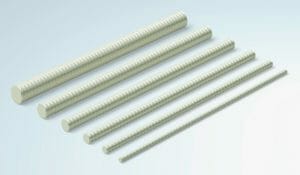
A French cancer treatment centre is utilising groundbreaking equipment that combines MRI and external-beam radiation therapy. This innovative solution is heavy and required special foundations incorporating Schöck Combar glass fibre reinforcement – installed for both its strength and its ability to guarantee no electromagnetic interference.
The Paoli-Calmettes Institute in Marseille is one of the leading cancer treatment centres in France. It is an extremely innovative environment and one particular piece of equipment is among the world’s first radiotherapy appliances to combine MRI and external-beam radiation therapy in order to to simultaneously image and treat the cancer. Unlike conventional X-ray scanners the ‘MRIDIAN’ does not utilise ionising radiation. It focuses solely on the tumour and leaves the surrounding tissue unharmed.

New unit weighs over ten tons
The new high-tech system, which weighs over ten tons and cost around £7m, is sophisticated in its performance. But to ensure the highest levels of precision, two main installation challenges had to be overcome – the strength of the foundations and the avoidance of any electromagnetic interference. Schöck Combar glass fibre reinforced polymer was the ideal solution. A load bearing reinforcement that absorbs tensile forces in concrete and is also completely non-metallic – so no risk of electromagnetic interference.
Electromagnetic interference can affect precision
Structural engineer Jean-Luc Galéa explains: “The ‘MRIDIAN’ generates a strong magnetic field and can respond very sensitively to electromagnetic interference, impairing imaging precision. No iron whatsoever may be present in any of the materials within the safety zone and that includes the concrete reinforcement. We opted for Schöck Combar as it met all the technical requirements and has very reliable certifications.” The strength of Combar was vital too, given that the foundations had to support over ten tons of technology (a required load-bearing capacity of over 5000lb/m2).

Slab had to be cut and the centre insulated
Initial foundation work involved the anchoring of micropiles more than ten metres deep. A reinforced concrete floor slab was then cut out around the centre of where the MRIDIAN had to be insulated, leaving an octagonal outline. Anchors were placed at various planes on each of the eight sides and Combar rods were inserted at the top and bottom of each edge to act as reinforcing anchors. Then alternating rods were inserted to absorb the shear loads. As general contractor Stephane Roldan explains: “To reinforce the upper and lower levels, we created grates, each made up of 12mm diameter Combar rods. The rods are sturdy, but easy to machine and the plastic clips, ties and spacers were very useful in allowing fast and accurate placement”.

A more effective alternative to steel reinforcement
For decades, steel rebar has been commonly used as the reinforcement in concrete construction. Despite its strength, steel is not the ideal solution for reinforcement, especially in corrosive and electromagnetically sensitive environments. Schöck initially developed Combar (derived from ‘composite rebar’) back in the 1990s as an alternative to reinforcing steel. More recently it was issued with general technical approval (abZ) by the German Institute for Construction Technoloy – for all applications and with a service life up to 100 years. The approval procedure being similar to that required for European Technical Assessment (ETA).
Combar has a wide range of applications
In addition to medical and research facilities – where the the functionality of highly sensitive instruments can be signifcantly affected by conductivity from steel reinforcement – there are a number of other applications for Combar. Some examples being:
- Boring machines, when used in shaft walls of tunnels, have a problem as they cannot drill through steel reinforced walls. With Combar the machine can cut directly through the head wall.
- Bridges, marine and harbour constructions benefit from Combar as any corrosion risk, even from salt, is eliminated.
- In high voltage transformers and power plant reactors, inductive currents are generated within the reinforcing steel. The heat will affect the rebar strength if too close to the coils. Combar remains unaffected.
For enquiries, in the first instance visit www.schoeck.co.uk; contact: [email protected] or tel: 01865 290 890
